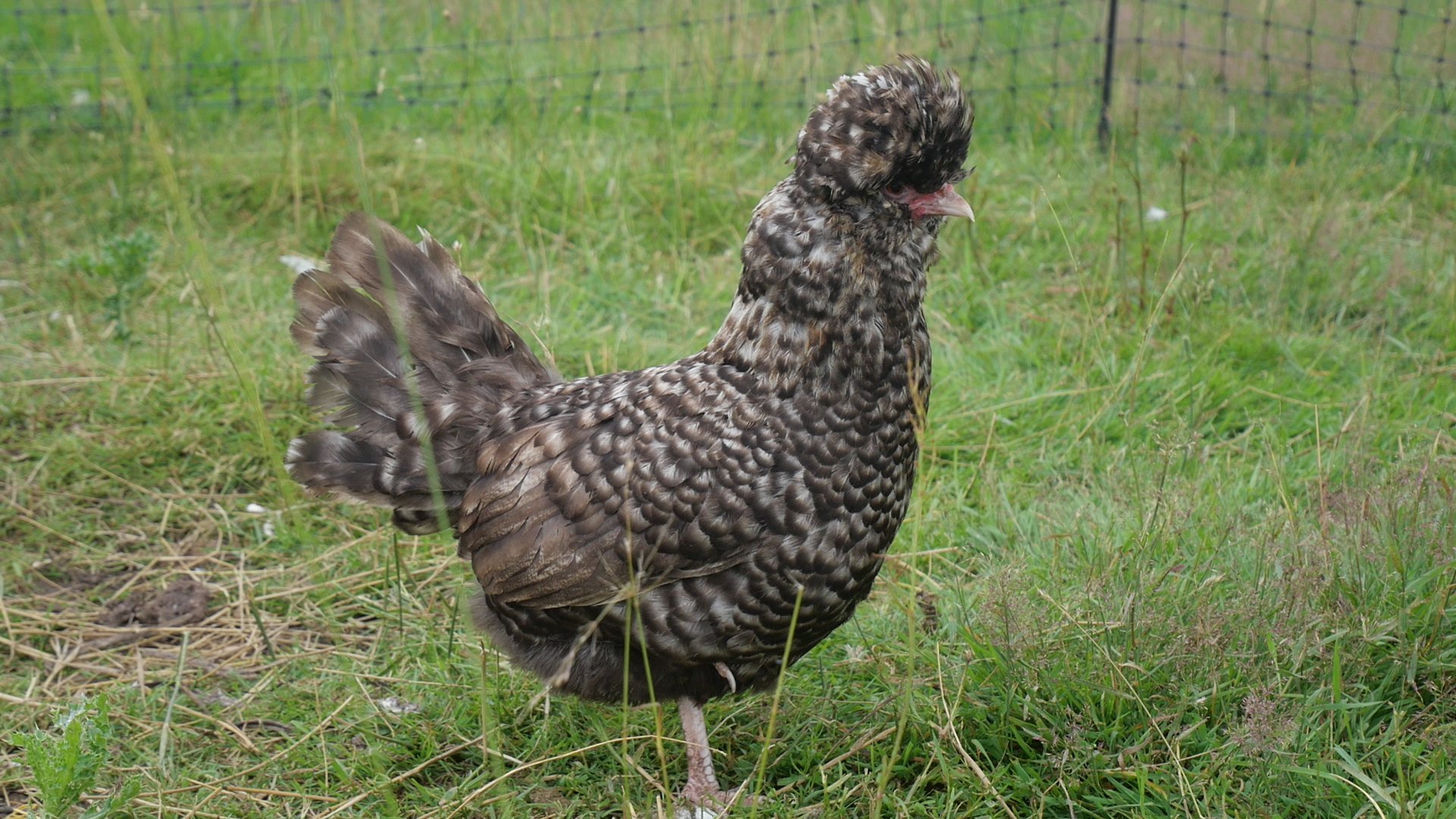HOW TO TELL IF CHICKENS ARE TOO COLD
With winter only around the corner, you might have one question when you’re down in the coop; how do I tell if my chickens are too cold? It’s a natural concern, especially as us humans are pretty useless at thermo-regulation! Chickens are pretty hardy beasts, however, and can easily stand temperatures down to -10°C with the correct protection.
Chickens are hardy creatures with the right help
IS MY CHICKEN COLD?
Luckily it’s pretty easy to tell if your chickens are cold. In freezing weather, they’ll puff up their feathers to trap warm air against their skin. They will often hold one leg up to their breast, switching feet regularly to try and protect themselves against the low temperatures. These characteristics are pretty common if a hen or cockerel is feeling the bad weather; after all, if I was a chicken I wouldn’t be out strutting over the snow in bitter cold. However, you should worry if you chickens show these symptoms combined with being wobbly, weak and unable to perch. You’ll often find them on the floor and as your flock become cold they’ll huddle together.
Cold chickens will often hold their legs up
A hen with her teenage chicks
ARE MY CHICKS COLD?
When you’re hatching chicks and keeping them in a brooder, it’s very obvious when the temperature isn’t right. Too hot, and your new hatchlings will escape the brooder lamp as far as they can. Too cold and you’ll find them huddling together right beneath the bulb. Ideally, you want a temperature so that they’re pattering around and then just resting and falling asleep wherever they choose. If you have a brooder plate rather than a bulb, you’ll find they’ll often sleep beneath this.
HOW TO HELP HYPOTHERMIC CHICKENS
If you head out to your coop and find all your chickens wobbly and trying to huddle together, you need to act fast before hypothermia sets in. You need to raise their body temperatures gradually. Do not blast them with heat as this can actually send the body into shock. Instead, bring your chickens indoors to a cool room - a garage or utility room, for example. Make sure the area is draft free and provide dry, fresh bedding or, alternatively, some old towels. Instead of turning the heat on, I prefer to use the old-fashioned water bottle, Wrap it in a towel and pop it in the box or area with your chickens. Place them on/near this and then, as they begin to come around, they’ll gradually move away from the heat.
It’s also essential to offer fresh water and food at this stage. Chickens will expel a lot of energy trying to stay warm, so as soon as they are revived enough to begin moving around, they need some nourishment. Their normal food is a good idea, but a higher protein option is a good idea. I like to use grain or some wildbird fat ball for this.
HOW TO HELP HYPOTHERMIC CHICKS
Chicks will die far quicker than chickens when they’re cold. You must get them warm as quickly as possible. If I have an incubator running at the time, I like to pop the chick inside as it’ll instantly begin to warm them. Alternatively, one of the easiest ways is to use your own body heat. There are many times I’ve sat on the sofa with a chicken in my pants! If you’re a woman, pop it in your bra. These areas generate the most heat and if you can bear it, skin on skin is best!
AVOID YOUR CHICKENS GETTING TOO COLD
As the saying goes, prevention is always better than cure. Chickens can really withstand some very cold temperatures and be totally fine. The key is to not let the cold set in and allow your birds’ natural ability to regulate their body heart.
Offering the right shelter can help keep chickens warm
BEDDING - It’s really important to keep your chicken bedding as dry as possible. Wet bedding not only gets mouldy and can quickly spread disease, but distressed chickens that are unable to perch cannot get comfort if their bedding is wet.
DRAFTS - It’s also essential to give your chickens a place to roost and rest out of the wind and drafts. The fastest way to strip a bird of her body heat is a chilly breeze she’s unable to escape. However, it is vital to maintain good ventilation. Without this, ammonia, heat and mould can build up leading to all manner of diseases. I like to offer sheltered roosting at the top of the coop and a draft-free floor and nesting area, with ventilation holes in the middle of the coop’s height.
HEAT - Chickens are far more likely to fall ill and die if they’re too hot so do not be tempted to add open fan heaters or similar to their coops. This is also a huge fire risk! To offer some ambient heat I’ll use old-fashioned hot water-bottles wrapped in towels, aquarium style heat mats to provide low level heat or a thin, tubular heater. This is enough to stave off the frost. As a good rule, if the water in your coop doesn’t freeze overnight, your chickens will be totally fine.
MULTIPLE BIRDS - Chickens are social creatures and in most normal set-ups you’ll have multiple birds in your flock. These girls and guys will huddle together if they want some extra heat.
If you’ve got any questions about keeping your chickens warm, let me know below!








